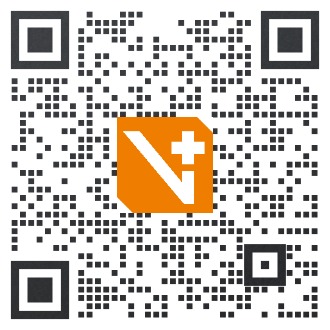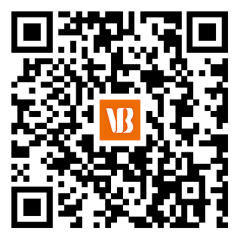
商务合作

动脉网APP

可切换为仅中文
When Radar Therapeutics’ first treatments go on the market, the company hopes not just to deliver an exciting new treatment modality but also therapies that are accessible to a broad range of patients, said CEO and co-founder, Sophia Lugo.
首席执行官兼联合创始人索菲亚·卢戈(SophiaLugo)表示,当雷达治疗公司(Radar Therapeutics)的第一批治疗药物上市时,该公司不仅希望提供一种令人兴奋的新治疗方式,而且希望提供广泛患者可以使用的治疗方法。
Radar Therapeutics emerged from stealth this week with an announcement that it had raised $13.4 million in an oversubscribed seed financing round led by NfX Bio. Eli Lilly & Co, Biovision, and KdT Ventures also joined the round, with participation from PearVC, BEVC, and other investors. They will use the funds to advance various internal programs, expand their team, and pursue partnership opportunities.
本周,Radar Therapeutics从隐身中脱颖而出,宣布在NfX Bio领导的超额认购种子融资回合中筹集了1340万美元。礼来公司、Biovision和KdT Ventures也加入了这轮融资,PearVC、BEVC和其他投资者也参与了这轮融资。他们将利用这些资金推进各种内部项目,扩大团队规模,寻求合作机会。
Specifically, that means doubling the employee headcount in the coming months while continuing to generate preclinical data in support of planned therapeutics, Lugo said. .
具体来说,这意味着未来几个月员工人数将翻一番,同时继续生成临床前数据以支持计划的治疗方法,卢戈说。。
Genetic therapies, especially mRNA therapeutics, are all the rage at the moment but they have some limitations. Most rely on cell surface proteins to act in a targeted manner, and this often means using ex vivo cell therapies, which introduce genetic material outside of the body. But to create broadly scalable therapeutics, “you need to go in vivo” especially for complex diseases which have a high bar for safety, Lugo said.
基因疗法,特别是mRNA疗法,目前风靡一时,但它们有一些局限性。大多数依赖细胞表面蛋白以靶向方式起作用,这通常意味着使用离体细胞疗法,将遗传物质引入体外。卢戈说,但要创造可广泛扩展的治疗方法,“你需要在体内进行”,特别是对于安全性要求很高的复杂疾病。
That’s what makes Radar’s therapeutic approach different from others. The company is building a business around medicines that use RNA sensors—mRNAs that gate their expression based on other RNAs in the cell—to deliver genetic payloads directly into cells that only get transcribed in the presence of specific expression signatures. .
这就是雷达治疗方法不同于其他治疗方法的原因。该公司正在围绕药物建立业务,这些药物使用RNA传感器mRNA,这些mRNA基于细胞中的其他RNA来控制其表达,从而将遗传有效载荷直接传递到只有在特定表达特征存在下才能转录的细胞中。。
Scientists can find those cellular signatures quickly thanks to the proliferation of single-cell transcriptomic datasets generated in recent years that provide detailed RNA expression profiles for individual cells. “We mine those transcriptomic datasets to look for cellular signatures, a unique transcript, that denote a desired cell type,” Lugo explained in a conversation with GEN.
由于近年来产生的单细胞转录组数据集的增殖,科学家可以快速找到这些细胞特征,这些数据集为单个细胞提供了详细的RNA表达谱。“我们挖掘这些转录组数据集以寻找细胞特征,一种独特的转录本,表示所需的细胞类型,”卢戈在与GEN的对话中解释道。
Radar also taps into “advances in our understanding of RNA-editing enzymes such as ADAR, to design simple switches to create smart mRNA therapies,” noted Eerik Kaseniit, PhD, Radar Therapeutics’ co-founder and CSO. “Unlike approaches using microRNAs to turn payload expression off in predefined cells, Radar’s technology enables the activation of protein expression [only] in desired cells.”.
雷达还利用“我们对RNA编辑酶(如ADAR)的理解取得的进展,设计简单的开关来创建智能mRNA疗法”,雷达治疗学联合创始人兼CSO Eirk Kasenit博士指出。“与使用microRNA在预定义细胞中关闭有效载荷表达的方法不同,Radar的技术能够[仅]在所需细胞中激活蛋白质表达。”。
Besides securing funding, Radar has assembled an impressive team of advisors to guide its development efforts including experts in synthetic biology and bioengineering. The list includes: Xiaojing Gao, PhD, and James J. Collins, PhD, who are also named as co-founders as well as David Schaffer, PhD, Eric Klein, MD, and Svetlana Lucas, PhD.
除了获得资金外,Radar还组建了一支令人印象深刻的顾问团队来指导其开发工作,其中包括合成生物学和生物工程方面的专家。名单包括:高晓静博士和詹姆斯·J·柯林斯博士,他们也是联合创始人,以及大卫·谢弗博士、埃里克·克莱恩博士和斯维特拉娜·卢卡斯博士。
Collins, who is a pioneer in the field of synthetic biology and professor of medical engineering & science and biological engineering at MIT, noted that Radar’s technology “has the potential to enable a new generation of safer, more durable and effective mRNA therapeutics for applications beyond vaccines.” .
柯林斯是合成生物学领域的先驱,麻省理工学院医学工程与科学及生物工程教授,他指出,雷达技术“有可能使新一代更安全,更耐用和有效的mRNA治疗剂用于疫苗以外的应用。”。
A fortuitous meeting
偶然的会面
Many successful scientific partnerships begin with encounters on university campuses. Radar Therapeutics has a similar story. Lugo and Kaseniit first met at Stanford University. By the time they met, Kaseniit had been thinking about mRNAs for at least a decade, specifically the possibility of controlling RNA’s translation.
许多成功的科学合作始于大学校园的遭遇。雷达治疗学也有类似的故事。卢戈和卡塞尼特在斯坦福大学首次见面。在他们见面的时候,Kasenit已经考虑了至少十年的mRNA,特别是控制RNA翻译的可能性。
As an undergraduate, he studied mechanisms of RNA regulation and reprogramming. He continued his studies on RNA during his graduate program at Stanford University, in the laboratory of Xiaojing Gao, an associate professor of chemical engineering. .
作为一名本科生,他研究了RNA调控和重编程的机制。在斯坦福大学研究生课程期间,他在化学工程副教授高晓静的实验室继续研究RNA。
Two of Radar Therapeutics’ co-founders Sophia Lugo and Eerik Kaseniit, PhD [Radar Therapeutics]And that’s where he was introduced to the idea of creating an RNA that could be controlled by other RNAs, Kaseniit told GEN. Not many scientists were studying the approach at the time but Kaseniit could see that it had legs.
雷达治疗学(Radar Therapeutics)的两位联合创始人索菲亚·卢戈(Sophia Lugo)和厄里克·卡塞尼特(Erik Kasenit)博士(雷达治疗学),卡塞尼特(Kasenit)告诉GEN,在那里他被引入了创造一种可以被其他RNA控制的RNA的想法。当时没有多少科学家在研究这种方法,但卡塞尼特(Kasenit)可以看到它有腿。
Early experiments using RNA sensors in Gao’s lab suggested that the system worked well and could be used to design effective medicines. Kaseniit, Gao, and other colleagues published a paper in Nature Biotechnology in 2022 that described a system for RNA sensing that uses adenosine deaminases acting on RNA or RADAR—the technology that will now underpin Radar Therapeutics’ pipeline.
高的实验室使用RNA传感器进行的早期实验表明,该系统工作良好,可用于设计有效的药物。Kasenit、Gao和其他同事于2022年在Nature Biotechnology上发表了一篇论文,描述了一种RNA传感系统,该系统使用腺苷脱氨酶作用于RNA或雷达,这项技术现在将支撑雷达治疗学的管道。
Separately, scientists from Duke University Medical Center published their own research using programmable RNA-sensing technology in Nature also in 2022. .
另外,杜克大学医学中心的科学家也于2022年在《自然》杂志上发表了他们自己使用可编程RNA传感技术的研究。
When Kaseniit met Lugo, she was enrolled in an MBA program at Stanford. They decided to launch a company that developed and commercialized therapeutics using the RNA sensor technology developed in Gao’s lab once they were done with their respective programs. Lugo was excited about its potential and simplicity.
当Kasenit遇到Lugo时,她被斯坦福大学(Stanford)的MBA课程录取。他们决定成立一家公司,在完成各自的项目后,利用高的实验室开发的RNA传感器技术开发并商业化治疗方法。卢戈对它的潜力和简单性感到兴奋。
“All you need is the transcriptome profile of a cell to design this switch,” she said. “We can interrogate over 100,000 unique human transcripts [and] we can look at both coding and non-coding regions.”.
“你所需要的只是细胞的转录组谱来设计这个开关,”她说。“我们可以查询超过100000个独特的人类转录本,我们可以查看编码区和非编码区。”。
Planned therapeutics will have three components: a sensor, a stop codon, and the mRNA encoded therapeutic. Their mechanism of action is also quite simple. The stop codon prevents the mRNA therapy from being translated by the ribosomes when the payload enters the cell. The sensor is the reverse complementary sequence of the cell signature associated with the disease of interest.
计划的治疗将有三个组成部分:传感器,终止密码子和mRNA编码的治疗剂。它们的作用机制也很简单。当有效载荷进入细胞时,终止密码子阻止mRNA疗法被核糖体翻译。传感器是与感兴趣的疾病相关的细胞特征的反向互补序列。
When the payload is delivered to a cell with a matching signature to the sensor, a deaminase found in most human cells edits the stop codon in a way that inactivates it so that the mRNA can be translated. Because the translation of the mRNA therapy is controlled, Radar’s therapies avoid potentially toxic side-effects from the therapeutic being transcribed in nontarget cells. .
当有效载荷被传递到具有与传感器匹配特征的细胞时,在大多数人类细胞中发现的脱氨酶以使其失活的方式编辑终止密码子,从而可以翻译mRNA。由于mRNA疗法的翻译受到控制,Radar疗法避免了在非靶细胞中转录的疗法可能产生的毒性副作用。。
The big questions now are what the first therapies from Radar will be and when they will be ready for the market. Radar is not ready to talk about exactly which diseases it plans to pursue immediately but there are indications that one target will be autoimmune disorders. However, Lugo is not ruling anything out.
现在的大问题是Radar的第一批疗法是什么,以及何时可以上市。Radar还没有准备好谈论它计划立即治疗哪些疾病,但有迹象表明,其中一个目标将是自身免疫性疾病。然而,卢戈并不排除任何可能性。
“We want places where there’s a step change in safety and in accessibility. And where there are really complex therapeutic compartments that no one could go after because they didn’t have the safety switch,” she said. “Autoimmune diseases are interesting to us because [no] ex vivo cell therapies have been approved for the immune compartment.
她说:“我们希望在安全性和可及性方面有一个逐步变化的地方。那里有真正复杂的治疗室,因为没有安全开关,所以没有人可以去。”。“我们对自身免疫性疾病很感兴趣,因为[没有]离体细胞疗法已被批准用于免疫区室。
And if you want to go after large autoimmune populations, you need something that is very safe.” .
如果你想寻找大量的自身免疫人群,你需要一些非常安全的东西。”。
Besides safety, accessibility is an important value for the company as it works toward its first treatments. “We want to produce a medicine that doesn’t cost a hundred thousand dollars or more to manufacture,” Lugo said. She pointed to cell therapies that require complex extraction and engineering protocols in manufacturing facilities.
除了安全性之外,无障碍性对于该公司来说也是一个重要的价值,因为它正在努力进行第一次治疗。卢戈说:“我们想生产一种制造成本不超过十万美元的药物。”。她指出,细胞疗法需要在制造设施中进行复杂的提取和工程方案。
Those costs can quickly drive up the cost of treating patients. And that’s a scenario that Radar wants to avoid. Its therapies will be designed in such a way that they could be easily given in a clinic, Lugo said. .
这些费用会迅速推高患者的治疗费用。这是雷达想要避免的情况。卢戈说,它的治疗方法将被设计成可以在诊所轻松使用的方式。。
Lugo also prefers not to speculate about when the first therapies could come to market. Therapy development takes time and requires lots of testing before patients can take the treatments. “This is an exciting new way of doing cell type specific expression, and we hope that rallies enough world-class talent and finances to get this to patients,” she said.
卢戈也不愿意猜测第一批疗法何时上市。治疗开发需要时间,并且在患者接受治疗之前需要进行大量测试。她说:“这是一种令人兴奋的细胞类型特异性表达的新方法,我们希望能够聚集足够的世界级人才和资金,将其用于患者。”。
“We want to have our own internal programs because we have strong beliefs about what kinds of medicines need to exist in the world and for what kinds of patients [but] we are open to co-development and taking our own internal programs forward through different financing mechanisms.”.
“我们希望拥有自己的内部计划,因为我们对世界上需要什么样的药物以及需要什么样的患者有着强烈的信念[但是]我们愿意共同开发,并通过不同的融资机制推进我们自己的内部计划。”。
NewsAutoimmune diseasesMessenger RNARNA-based therapeuticsTranscriptomicsRadar Therapeutics
新的自身免疫性疾病传感器基于rna的治疗转录组学雷达治疗
最近内容 查看更多
胰腺特异性多巴胺激动剂降低抗精神病药物引起糖尿病的风险
2 天前
Solugen获得2.136亿美元明尼苏达州生物生产设施的有条件承诺
2 天前
CAR T细胞疗法在生物材料将皮肤纳入游戏后获得第二次胜利
2024-06-12